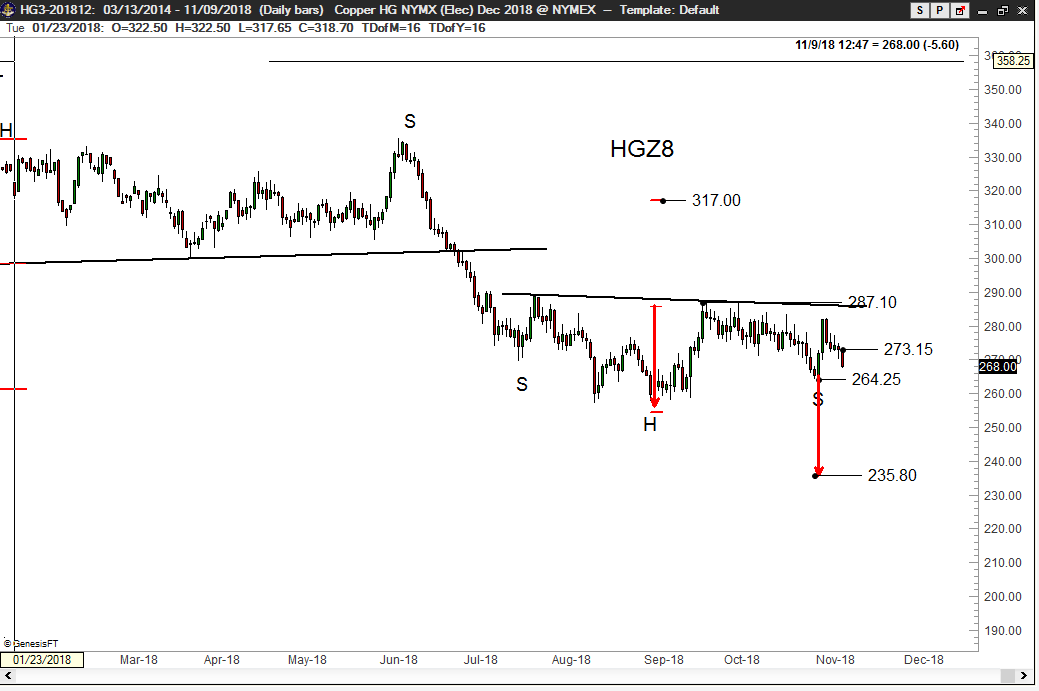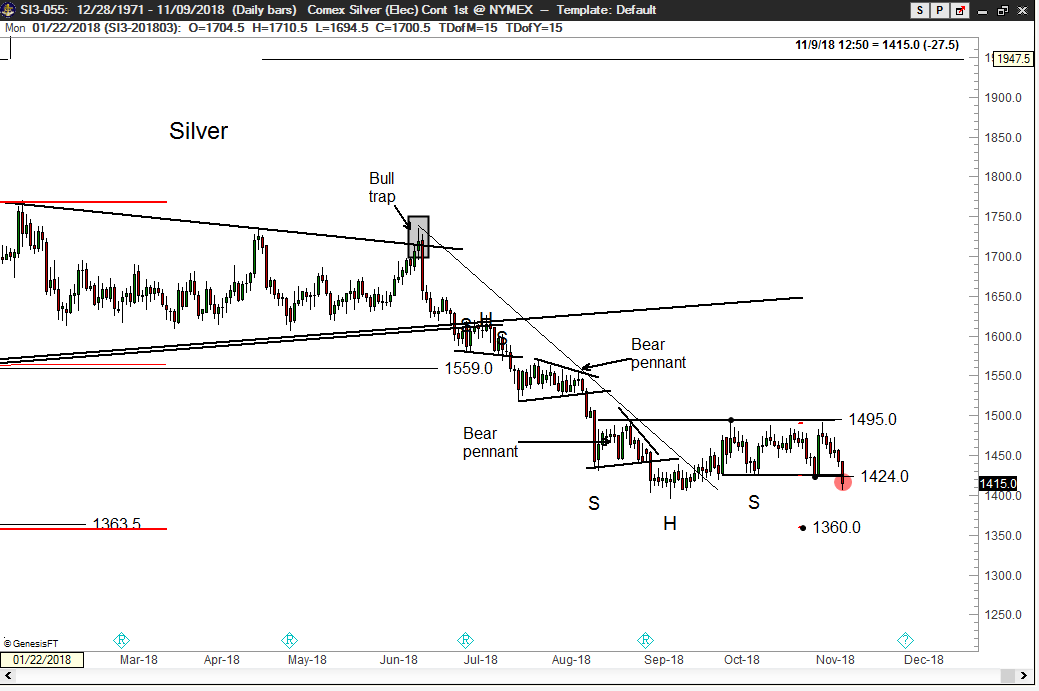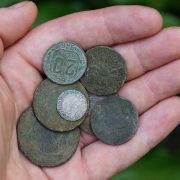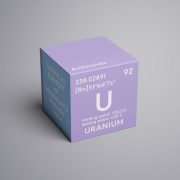Factor Member Webinar November 2018
/by Peter Brandt- Market review
- I struggle to include trading activities into my daily schedule and I would like to know how Peter does it or suggests how to do it. I am not a full-time professional trader.That means I have full time job, however, at work I can usually manage to have access to my trading account within two hours. But, I also have business dinners, a small child which I take care of, play sports, and do activities with friends. What is the right thing to do from a trading perspective when a breakout happens or an alert pop ups when I am doing these activities? Should I finish them and then go to a computer? Should I always have my computer with me sneak out and do trading activities? Should I arrange my day that I have full time access to my trading computer? As far as I understand it Peter does not sit in front of the computer all the time. How does he manage his trading activities when he is at dinner or away for a few hours? 20:34
- Peter often refers to his change to an Aggressive Risk Management - what are the parameters and details around this? 32:23
- Please show CCJ Comeco Uranium again. Where did you place your entry and where was your stop? After today - would you exit the trade, move your stop or wait? 37:09
- INDA 12wk H&S top, why 100BP? ITA 7 month rectangle, why 38BP? GE EURO DOLLAR 12wk rectangle and 4 mo descending triangle - why 44 BP? 38:41
- Are there markets where it is fine to use GTC orders with execution possible outside of regular trading hours or does Peter re-enter orders for each market, each day. It must get complicated when trading Asian, European and US contracts if entering orders daily for each market. 40:59
- Why do you advise traders to avoid day trading? 42:55
- USDZAR - Setting up a descending triangle, would you take it? Why or why not? 45:18
- This is a bit operational, but is there a service that you know of which constantly provides the next 2-3 futures contracts automatically rather than having to manually change watchlists to reflect current contracts? Or does Peter have to manually go through and update watchlists for new/expired contract. 46:39
- Describe your use of Bollinger Bands ... and compare the BB's with Keltner Channels, if you use them. I noticed your use of the BB's on a chart you pulled up when answering a question from your July webinar. 47:57
- Recently I was in a EURUSD trade with about 25 pip risk and got stopped with 10 point slippage (35 pips 10 extra = 40% extra risk). I was using Interactive Brokers. I am wondering if I could have avoided this had I traded the Euro futures contract. In your experience do brokers penalize with more slippage than the futures exchange would have? 50:31
- You mentioned in another webinar - you prefer to trade futures vs currency pairs when you have a choice and one reason was because “you know your counter party risk in futures market”. What does that mean? 52:07
- I would like to understand to what extent you follow fundamental factors and use them in your trading decisions. From the content online it seems that sometimes you do think about them in terms of finding a bias to a chart but at other times you say you ignore them completely. 54:20
- Van Tharp stresses the importance of trying to achieve large R multiples on the winning side to compensate for all the small losses. And Van Tharp stresses letting your profits run. In contrast, Peter has price targets and takes his profit when the target is met. I would be interested in hearing Peter talk about this for a moment. 56:30
- When do you consider a pattern backtest is no longer worthy of an entry. Let's say for example a pattern completed and broke through resistance. Let's say the price went 50% of the way to your target after you break through resistance but then comes back to test the previous resistance (which is now support). At what point do you consider the pattern complete? If it does come to backtest support after going 50% of the way to your target, do you consider this still a possible entry? How would your view change if it wasn't 50% but maybe 60%, 70% or 100% of the way to the target? Is there a time criteria that you might also use to consider a pattern a dud or complete? 58:46
- How do you determine if you should take profit at the measured move for that pattern, or if you should just build a position (with trailing stops) because you think it has much more to run? 1:01:35
- The biggest challenge I have seems to be managing stops, I get stopped out often and lose the opportunity to the gains. I have been trying to learn the way Factor is managing stops, but it is not yet clear to me about how to use the rules. When is the 3 Day Stop Rule applied and how to manage it? 1:02:10
- Why do you sometimes trade differed contracts further out vs current contract? Do you do this because the chart setup is cleaner or looks better? 1:04:19
- In his book, Schabacker talks about "The Complex Pattern" - head and multiple shoulders OR multiple head and shoulders. This is a more reliable reversal than normal H&S. I never see Peter mention this pattern, does he consider it valid? If so, does he see this pattern developing in Silver or Litecoin at the present moment? 1:05:57
- As most Futures Exchanges are imposing higher data fees, what is your advice for startup CTAs to manage costs effectively? 1:08:08
- Completed patterns in years past, you stated could be “taken to the bank.” I do not find that the case today. Do you agree and what fundamental shift must a Classical Chartist make today? 1:10:53
- As we are aware, Peter trades across markets (from Futures, Spot FX to Cash Equities); how does he manage his trading? Specifically, his signals and Order Management book 1) Aside from classical chart patterns, how does Trade Navigator augment his process to confirm buy/sell signals? 2) From past articles, he mentioned that most orders are manually entered and for certain markets he does not place stops (overnight). With recent volatility (mid-term elections), has there been exceptions to his rules? 3) Previously, my past understanding was CQG Trader (API Bridge) into ADM (for Futures); Interactive Brokers (for cash equities) and possibly Saxo/IB (Spot FX). Is this still the case? 4) Is Trade Navigator still the main tool to manage all orders? 1:12:43
- What are your current stop-raising protocols? 3DTSR on the 4-Hour chart? 1:16:57
- If one traded solely on the weekly close or Real Range for determining pattern boundary lines vs spindles is that a viable way or should spindles be more/= important? 1:17:31
- Beginning with equity of only $100,000, which often limits multiple contract etc., is it still worth the effort to trade due to the limi ted options of that amount? So what is the optimal initial equity amount to make significant trading progress…$200k? 1:17:55
- You said you don't trade volatility, long or short. Why is that? Does classical charting principle work in the vol space? 1:18:49
- What qualities of a chart have real predictive value? 1:19:37
- In years past you made many more trades in a week than now. That provided greater opportunities to increase your equity (with risks also, I know) but with fewer trades done today, it would appear a full time career in trading patterns is highly limited, do you agree? 1:19:53
- There are QO and YG in mini gold contracts. Why do you prefer YG over QO? How about copper's mini contract? 1:21:45
- Can you explain the difference between continuous and near-by chart? How do you use them? 1:22:41 LINK to document Peter mentioned
- Can you comment on HQY stock breakout, is that a trade you'd take? Why or why not? 1:23:34
- Do you usually use the 55 or 57 charts for futures when using Trade Navigator? What do you prefer to use when getting an overview on a market? 1:23:52
- How did you quit trading big after your initial win that greatly helped you establish a portfolio in the proper size? 1:25:16
- Current thoughts on BTC? 1:27:04
Member webinar questions
/by Peter BrandtKeeping a trading log
/by Peter BrandtIndustrials Softening
/by Peter BrandtCopper
Some Industrials are acting soft here. For Copper, a decisive decline below 264 would complete a H&S failure pattern with a target of 235. I believe that the decline on Friday was a Wyckoff Sign of Weakness day – and Friday’s high should not be penetrated. I am willing to short Copper if the market provides a measured-risk opportunity.

Silver
I spoke at some length about the Silver chart during this past week’s Member Webinar. The decline on Friday completed a H&S failure pattern with a likely objective of 1360. Factor is short Silver.

Factor Membership
.
Peter Brandt is a 40+ year veteran of trading. Through his Factor Service, members receive:
.
View your Factor Member options here. You could consider your membership in the Factor Service as just one more trade. If the Factor Service is not of value to you, well, it is just one more trade that did not work. Through the Factor Service I endeavor to alert novice and aspiring traders to the many pitfalls you will face – and to offer advice on overcoming those pitfalls. My goal is to shoot straight on what trading is all about. For more information watch my 30 minute webinar where we cover the Factor service in depth.
I hope you will consider joining the Factor community.


.
SaveSave









